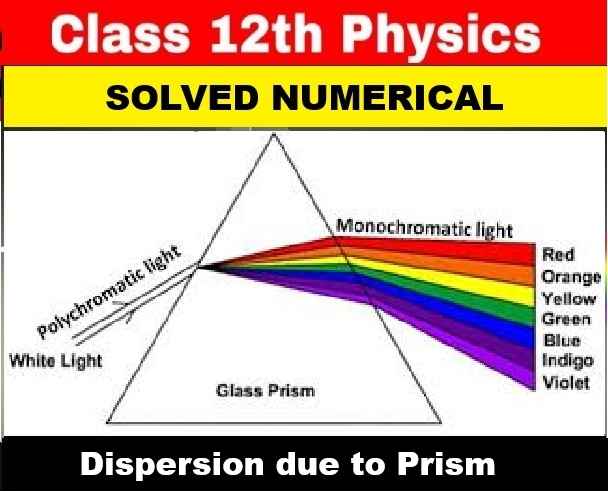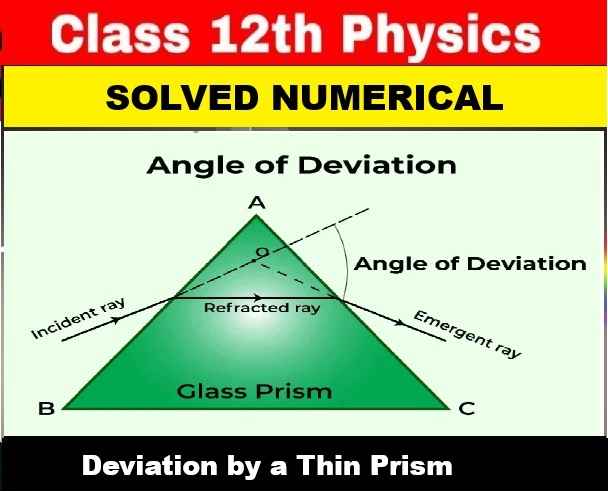Genetics- Some Basic Fundamentals MCQ Type Questions for ICSE Biology Class-10 . These MCQ / Objective Type Questions is based on latest reduced syllabus according 2021-22 session on bifurcated pattern. Main motto of MCQ Type Question is cracking the next upcoming exam of council. Visit official website CISCE for detail information about ICSE Board Class-10 Biology .
MCQ Type Questions Genetics Some Basic Fundamentals for ICSE Class-10 Biology
| Board | ICSE |
| Class | 10th (X) |
| Subject | Biology |
| Chapter | Genetics- Some Basic Fundamentals |
| Syllabus | on bifurcated syllabus (after reduction) |
| Session | 2021-22 |
| Topic | MCQ / Objective Type Question |
ICSE Class-10 Biology MCQ Type Questions of Genetics Some Basic Fundamentals
Question 1: Which one of the following is the phenotypic monohybrid ratio in F2 generation?
(a) 3 : 1
(b) 1 : 2 : 1
(c) 2 : 2
(d) 1 : 3
Answer : (a) 3 : 1
Question 2: If a pure tall plant is crossed with a pure dwarf plant, then offspring will be
(a) all tall
(b) all dwarf
(c) 3 tall 1 dwarf
(d) 50% tall 50% dwarf
Answer: (a) all tall
Question 3: The 9 : 3 : 3 : 1 dihybrid ratio is due to
(a) segregation
(b) crossing over
(c) independent assortment
(d) homologous pairing
Answer: (c) independent assortment
Question 4: A plant with green pods and smooth seeds with genotype Ggss will give rise to the following gametes:
(a) Gg and Ss
(b) Gs and ss
(c) Gs and gs
(d) Gg and gs
Answer: (c) Gs and gs
Question 5: After mitotic cell division, a female human cell will have:
(a) 44 + XX chromosomes
(b) 44 + XY chromosomes
(c) 22 +X chromosomes
(d) 22 + Y chromosomes
Answer: (a) 44 + XX chromosomes
Question 6: A cross was made between tall and dwarf plants. In F1 generation all plants were tall, when the F1 plants were selfed, the tall and dwarf plants appeared in 3:1 ratio in F2 generation. This is due to
(a) Dominance
(b) Crossing over
(c) Hybridization
(d) Segregation
Answer: (d) Segregation
Question 7: The recessive gene is one that expresses itself in :
(a) Heterozygous condition
(b) Homozygous condition
(c) F2 generation
(d) Y-linked inheritance
Answer: (b) Homozygous condition
Question 8: Genetics is the study of :
(a) Development of organisms
(b) Mechanisms of inheritance
(c) Nuclear division
(d) Variation between species
Answer: (b) Mechanisms of inheritance
Question 9: What is the transmission of genetic information from generation to generation known as?
(a) Cell division
(b) Meiosis
(c) Inheritance
(d) Mitosis
Answer: (c) Inheritance
Question 10: Which chromosomes can be found in a single sperm?
(a) X and X
(b) X and Y
(c) X or X
(d) X or Y
Answer: (d) X or Y
Question 11: Which structure will be found in the nucleus of a body cell in a woman?
(a) X allele
(b) Y allele
(c) X chromosome
(d) Y chromosome
Answer: (c) X chromosome
Question 12: Which word describes an individual who has two identical alleles for a Particular gene ?
(a) Dominant
(b) Heterozygous
(c) Homozygous
(d) Phenotype
Answer: (c) Homozygous
Question 13: The allele for detached earlobes 1s dominant to the allele tor attached earlobes. Two parents are
heterozygous for detached earlobes. What is the probability of their first child having attached earlobes ?
(a) 0%
(b) 25%
(c) 50%
(d) 75%
Answer: (b) 25%
Question 14: The phenotype of an organism is its
(a) Combination of alleles
(b) Family pedigree
(c) Genetic make – up
(d) Observable features
Answer: (d) Observable features
Question 15: What will be the genotypes resulting from a 8enetic cross between two individuals, one of which is homozygous dominant, (TT), and the other heterozygous ?
(a) All Tt
(b) 50% TT, 50% tt
(c) 50% TT, 50%Tt
(d) 25%TT, 50% Tt, 25%tt
Answer: (c) 50% TT, 50%Tt
Question 16: When white-flowered Pea plants are crossed with red lowers. If these F1 plants pollinate themselves, the next generation (F2) contain both red and white flowered plants. Which statement explain this?
(a) The allele for red flowers is dominant and the F1 plants are heterozygous
(b) The allele for red flowers is dominant and the F1 plants are homozygous
(c) The allele for red flowers is recessive and the F1 plants are heterozygous
(d) The allele for red flowers is recessive and the F1 plants are homozygous
Answer: (a) The allele for red flowers is dominant and the F1 plants are heterozygous
Question 17: A cross between a tall plant (TT) and short pea plant (tt) resulted in progeny that were all tall plant because :
(a) Tallness the dominant trait
(b) Shortens is tie dominants trait
(c) Tallness is the recessive trait
(d) Height pea plant a not governed by gene T or t
Answer: (a) Tallness the dominant trait
Question 18: In human males all the chromosomes are paired perfectly except one. This/these unpaired chromosome is/are:
(i) Large chromosome
(ii) Small chromosome
(iii) Y-chromosome
(iv) X-chromosome
(a) (i) and (ii)
(b) (iii) and (iv)
(c) (iii) only
(d) (ii) and (iv)
Answer: (b) (iii) and (iv)
Question 19: Mendel selected which of the following traits for his studies:
(a) Stem length, flower position
(b) Flower colour, seed shape
(c) Colour of pod, cotyledon colour
(d) All of these
Answer: (d) All of these
Question 20: Which of these characters is dominant?
(a) Wrinkled shape of seeds
(6) Apical position of flowers
(C) Green colour of cotyledons
(d) Axial position of flowers
Answer: (d) Axial position of flowers
Question 21: Which statement concerning a pair of alleles for a gene controlling a single characteristic in humans is true?
(a) Both genes come from the father.
(b) Both genes come from the mother.
(c) One gene comes from the mother and one gene comes from the father.
(d) The genes come randomly in pairs from either the mother or father
Answer: (c) One gene comes from the mother and one gene comes from the father.
Question 22: A genotype can be described as
(a) The genetic makeup of an organism.
(b) Part of a chromosome that codes for a certain hereditary trait.
(c) The outward, visible expression of the hereditary makeup of an organism.
(d) The shifting of gene positions in chromosomes
Answer: (a) The genetic makeup of an organism.
Question 23: The sex of a person depends on :
(a) The genetic makeup of autosomes found in the egg cell.
(b) The genetic makeup of autosomes found in the sperm cell.
(c) Whether the unfertilized egg contains an X- or Y-chromosome.
(d) Whether the sperm that fertilizes the eg contains an X- or Y-chromosome.
Answer: (d) Whether the sperm that fertilizes the eg contains an X- or Y-chromosome.
Question 24: F represents the gene for brown coat colour and f represents the gene for white coat colour. In
the cross FF x ff all the offspring have a brown Coat. Which genetic principle is illustrated by this cross?
(a) Crossing-over
(b) Co-dominance
(c) Multiple alleles
(d) Dominance
Answer: (d) Dominance
Question 25: When an individual has both the genes of a con-trasting characters, it is said to be
(a) Homozygous
(b) Phenotype
(c) Heterozygous
(d) Genotype
Answer: (c) Heterozygous
Question 26: When two individuals differing in at least one character are crossed, the process is known as:
(a) Hybridization
(c) Pedigree
(c) Selection
(d) None of these
Answer: (a) Hybridization
Question 27: A cross was made between tall and dwarf plants. In F1 generation all plants were tall, when the F1 plants were self-pollinated, the tall and dwarf plants appeared in 3:1 ratio in F2 generation. This phenomenon is known as:
(a) Dominance
(b) Hybridization
(c) Segregation
(d) Crossing over
Answer: (c) Segregation
Question 28: Alternate forms of genes are known as
(a) Alleles
(b) Linked genes
(c) Chromosomes
(d) Homologous chromosomes
Answer: (a) Alleles
Question 29: The crossing of a homozygous tall plant with a dwarf would yield plants in the ratio of:
(a) All heterozygous tall
(b) Two tall and two dwarf
(c) One homozygous tall, two heterozygous tall and one homozygous dwarf
(d) All homozygous dwarf
Answer: (c) One homozygous tall, two heterozygous tall and one homozygous dwarf
Question 30: What is always found in female gametes and may be found in male gametes?
(a) One X chromosome
(b) One Y chromosome
(c) Two X chromosome
(d) One X chromosome and One Y chromosome
Answer: (a) One X chromosome
Question 31: Which terms is used for an organism that has two different alleles of a particular genes
(a) Dominants
(b) Heterozygous
(c) Homozygous
(d) Recessive
Answer: (b) Heterozygous
Question 32: Recessive Character
(a) the character which is dominant in the F1 generation and hidden in the second generation.
(b) The character which is dominant both in Fi generation and F2 generation
(c)The character which remains hidden both n F1 and F2 generation.
(d) The character which remains hidden in F1 generation and expressed in the second generation.
Answer: (a) the character which is dominant in the F1 generation and hidden in the second generation.
Question 33: Heredity
(a) Transmission of both the recessive and dominant characters to the progeny from generations to generations.
(b) Transmission of dominant characters to the progeny from generations to generations.
(c) Transmission of parental characters to the progeny from generations to generations.
(d) Transmission of recessive characters to the progeny from generations to generations.
Answer: (c) Transmission of parental characters to the progeny from generations to generations.
Question 34: Phenotype
(a) Set of observable characteristics or traits of an organism.
(b) Set of hidden characteristics or traits of an organism.
(c) Set of recessive traits of an organism
(d) Set of traits of an organism.
Answer: (a) Set of observable characteristics or traits of an organism.
Question 35: A genetic cross between two organisms may be shown as Gg x Gg. The letter g represent ………………
(a) A dominants allele
(b) A dominants Chromosomes
(c) A recessive allele
(d) A recessive Chromosomes
Answer: (c) A recessive allele
Question 36: Damage and errors in DNA causes …………………
(a) Mutation
(b) DNA repair
(c) Translation
(d) Transcriptions
Answer: (a) Mutation
Question 37: The recessive gene is one of that expresses itself in ……………….
(a) Heterozygous condition
(b) Homozygous condition
(c) F2 generations
(d) F1 generations
Answer: (b) Homozygous condition
–: End of Genetics Some Basic Fundamentals MCQ for ICSE Biology Class-10 :-
-: also visit :-
- MCQ Type Questions for ICSE Class-10
- ICSE Class-10 Text book Solutions, Notes , Syllabus, Paper, Notes
Please share with your ICSE friends if it is helpful
Thanks


